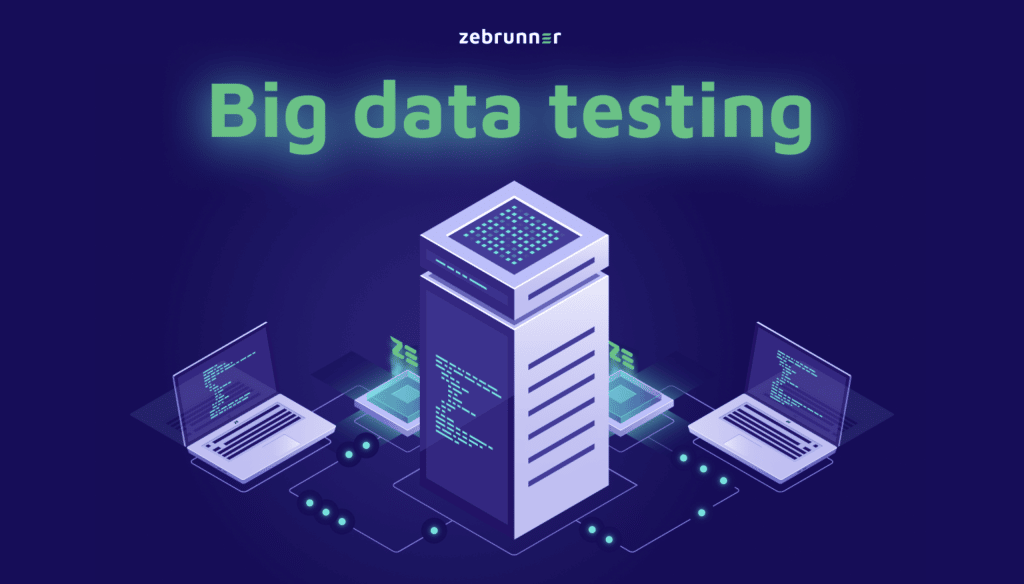Social networks, banking applications, and online shopping apps have been on our smartphones for a long time. These are all big data applications that we interact with regularly. Such software requires huge resources to create and maintain. What to do if you are faced with testing big data applications? Would a traditional testing strategy work here? What should we keep in mind? All answers are in the article below.
How is the Market Growing?
Big data is a constantly increasing collection of volumes of information of the same context, but with different presentation formats. The concept of big data also includes methods and tools for efficient and fast processing of such data.
The big data market size revenue is near $70 billion in 2022, Statista reports. According to forecasts, by 2027, the corresponding figure will reach $103 billion. On the one hand, a growing and developing market gives many opportunities. On the other hand, it puts forward a range of requirements. In any case, it is crucial to know how to set up the big data software testing workflow with the greatest possible efficiency for the company.
Let’s turn to the indicators of the big data testing market. In 2020, its volume was estimated at $20.1 billion. At the same time, experts predict that in the period up to 2026, the average annual growth of this market will be 8%. The impressive dynamics are due to the latest technologies, especially artificial intelligence.
When you test big data software, you check how smoothly the whole system and its elements work. The key goal is to guarantee that the data starts up without errors and delays, that the application has high performance, and data security is ensured.
Big data testing is simply about checking how correctly the data is run, processed, extracted, sorted, and analyzed. Performance testing and functional testing play a special role here.
What’s Included in Big Data Testing
As you start building your testing strategy, keep the following features of big data in mind. Firstly, data can be of varying degrees of structure: fully structured, semi-structured, and unstructured. Secondly, big data needs a special environment. Thirdly, testing big data involves working with sampling, so the testing strategy will be different from the traditional one.
Further, big data testing is based on such tests as:
Performance testing.
You simulate a real-world situation where a user works with the system and creates requests. Comparison of the obtained results with the expected ones allows you to evaluate how the application meets the declared requirements. In addition, you can evaluate the speed of user request execution, and estimate such software operation parameters as stability, reliability, and scalability.
Functional testing.
You analyze the functionality specifications of individual components and the entire system as a whole. It allows you to compare the actual performance of the application with the expected results.
Testing the reception, processing, storage, and data migration.
You check how well the business logic is implemented in these workflows, how the system behaves, and whether there are any problems during data operations.
What are the challenges you may face and how to solve them?
A huge volume of data.
Sounds trite, however, this is one of the biggest challenges of big data testing. Some companies need petabytes and exabytes of information to complete daily tasks. The QA team must check the availability, completeness, and relevance of this data, but due to its gigantic amount, this is difficult to do.
Giant workload.
While big data applications are designed to handle massive amounts of information. However, they may not be able to handle the surge in workloads. In this case, clustering and data partitioning are suitable solutions.
Lack of knowledge about big data.
The QA team must have a deep understanding of how big data works and how all the processes in a big data application are interconnected. Moreover, QA engineers should have high test scripting skills. To solve this problem, find mentors to help your QA team dive into the big data domain. A more budget-friendly solution is organizing a joint session of specialists who are already working with big data with the QA team.
Mandatory presence of several tools for testing.
No tool can perform e2e testing, so you select, configure, and synchronize a pool of big data testing tools. Here you should optimally configure and synchronize all the available tools.
Limitations of testing tools.
Feature-rich, quality tools are available in abundance in the automated testing domain. However, when you need to run several thousand threads at the same time, only a few pieces of software provide the best balance of capacity, functionality, and price. The optimal solution, in this case, is software with elastic pricing like Zebrunner test management, when you pay only for the time of using the tool without limiting threads. You can execute 1000+ threads in 15 minutes.
Big data testing benefits
You can conclude, based on the content of the previous section, that all challenges have solutions. In addition, big data testing provides businesses with many benefits:
Guaranteed data accuracy.
This allows companies to plan future product updates, build marketing strategies, and predict trends. Testing ensures that the data is accurate and works as intended.
Storage savings.
Big data storage is a separate cost item for big data application companies. The better the data is organized and structured, the cheaper it is to store it. Testing provides this.
Robust business strategy.
Accurate data is the basis for making key business decisions, developing risks, and creating a business strategy.
Ensuring correct work with data.
The big data structure contains many components. A defect in any component will degrade the performance of the application. If the data becomes unavailable at the right moment due to some kind of failure, its guaranteed accuracy no longer matters. Load testing applications with big data minimize the possibility of such a situation.


